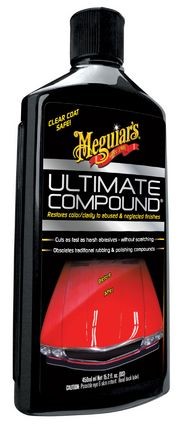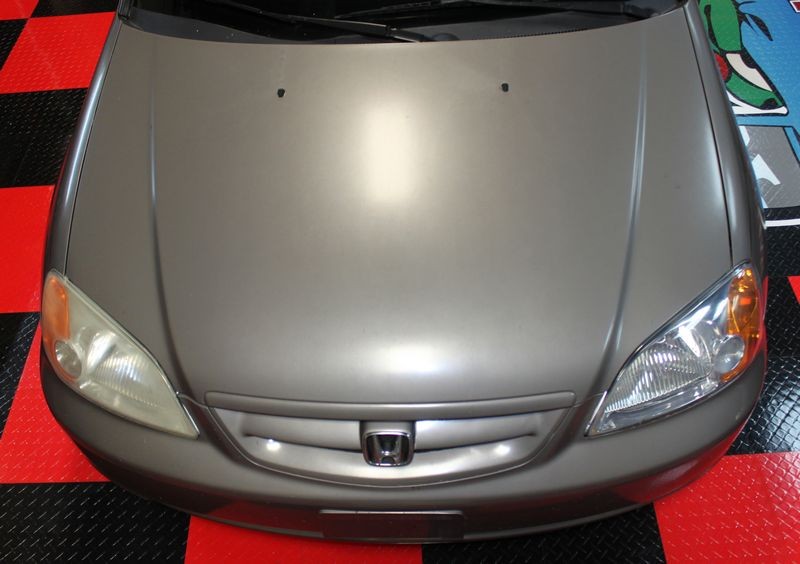Mike Phillips
Active member
- Dec 5, 2022
- 51,004
- 6
The Clearcoat Failure Photo Gallery Archive
Clearcoat paints were introduced to production cars in the U.S.A. starting in the early 1980's and since that time the technology has continually improved to create automotive paint systems that will last a long time as well as provide a beautiful finish with great gloss, clarity and shine.
We now have entire generations of people that have only owned cars with what's called a basecoat/clearcoat paint system; they have never owned, nor worked on a car that has a single stage paint system.
From time to time a new member will join our forum and ask for help removing oxidation from their car's finish not knowing that the problem with their car's paint, (basecoat/clearcoat), is not oxidation, but is in fact clearcoat failure.
Clear coat paints, when exposed to too much sun over time and without out proper care, like the paint on a brand new Mustang will deteriorate throughout the entire matrix or thickness of the clear layer of paint. You can't fix it by abrading the surface because the problem isn't just on the surface, it's throughout the entire layer of paint.
The primary problem most people experience with the clearcoat finish on their car is swirls. Swirls are actually scratches in the paint and they block your view of the color coat under the clear coat.
Swirls can be removed because they are topical, that is like oxidation the swirls are in the upper surface of the layer of clear paint and all you have to do is use a compound or a paint cleaner and remove a little paint from off the surface, which will act to level or flatten out the surface again. See the below thread for more information.
What it means to remove swirls, scratches and water spots out of automotive clear coats
Single stage paints like the type of paint that came on a 1965 Mustang will oxidize and the problem can be fixed because the problem is isolated to just the upper surface of the paint. The way you fix oxidation is to abrade or remove just a little bit of paint off the surface to expose a fresh layer of paint or what we call a fresh base.
Top: 1965 Mustang with single stage finish. Bottom: 2009 Mustang with a basecoat/clearcoat finish.

Classic cars with oxidized single stage paints are easy to fix, (in my opinion), as well as fun to work on.
The thing to understand is that there's a huge difference between these two types of paint systems; the good news is you can usually fix true oxidation but the bad news is in most cases once a clearcoat finish deteriorates to what we call clearcoat failure there's really nothing you can do to permanently fix the problem and restore a nice looking finish that will hold up over time. Usually you have to repaint the affected sections or repaint the entire car, or learn to live with the problem.
Examples of clearcoat failure.
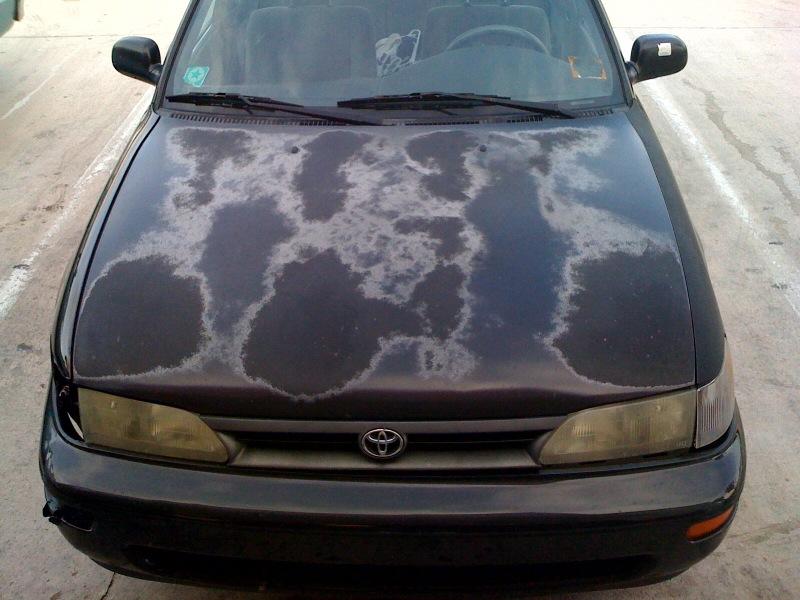

The basecoat layer of paint under the clearcoat layer is generally dull or flat, even when brand new; it gets it's gloss and clarity from the clear layer of paint on top of it. Once the clear layer flakes or peels off you cannot polish it to make it look good again as it has a flat or matte appearance.

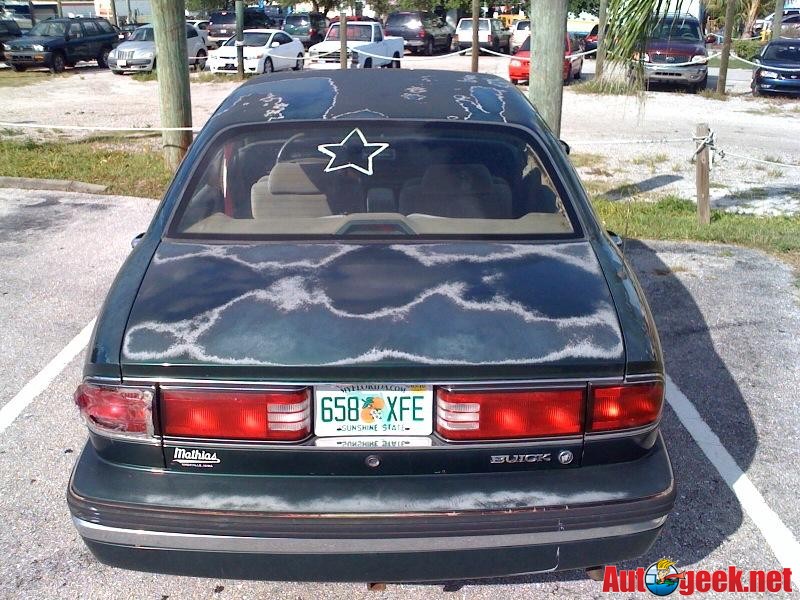
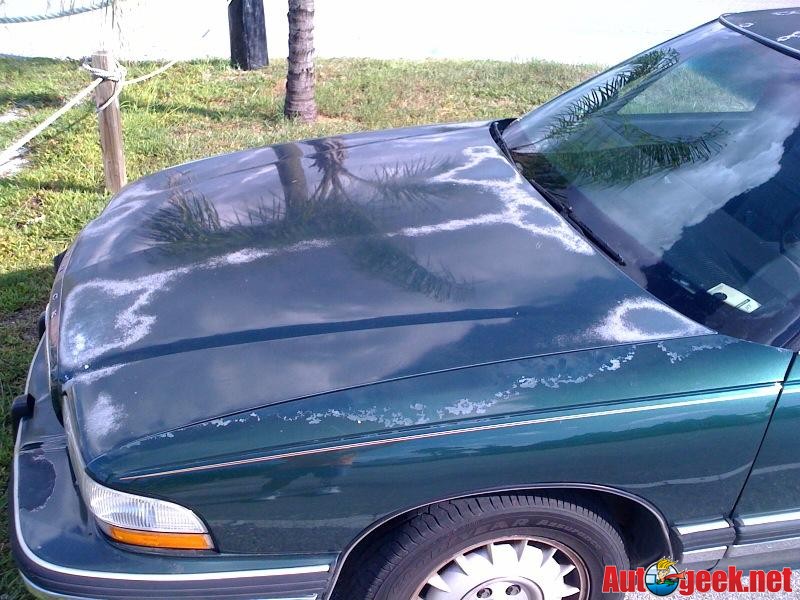
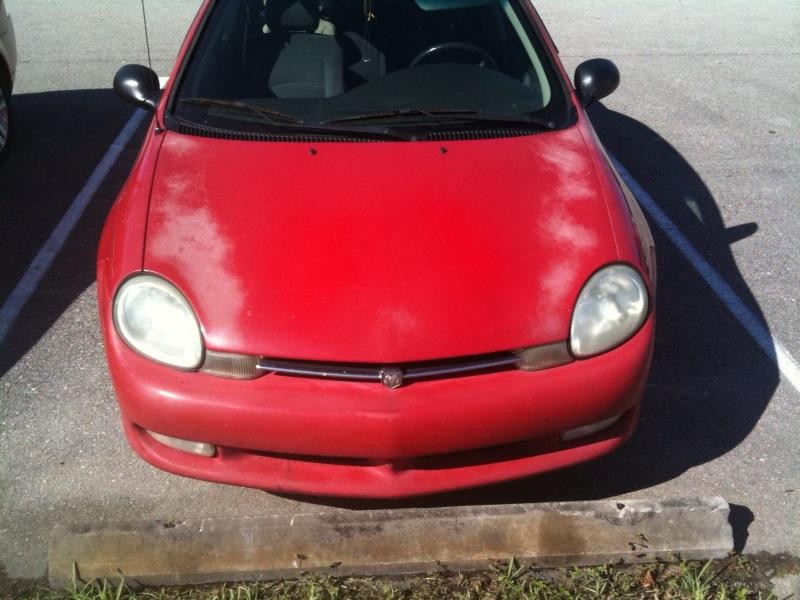
How to avoid clearcoat failure
1. Park your car out of the sun as much as you can.
2. Park your car out of inclement weather as much as you can.
3. Wash your car's finish with a non-detergent car wash
4. Put your car on a regular maintenance program that includes,

Clearcoat paints were introduced to production cars in the U.S.A. starting in the early 1980's and since that time the technology has continually improved to create automotive paint systems that will last a long time as well as provide a beautiful finish with great gloss, clarity and shine.
We now have entire generations of people that have only owned cars with what's called a basecoat/clearcoat paint system; they have never owned, nor worked on a car that has a single stage paint system.
From time to time a new member will join our forum and ask for help removing oxidation from their car's finish not knowing that the problem with their car's paint, (basecoat/clearcoat), is not oxidation, but is in fact clearcoat failure.
Clear coat paints, when exposed to too much sun over time and without out proper care, like the paint on a brand new Mustang will deteriorate throughout the entire matrix or thickness of the clear layer of paint. You can't fix it by abrading the surface because the problem isn't just on the surface, it's throughout the entire layer of paint.
The primary problem most people experience with the clearcoat finish on their car is swirls. Swirls are actually scratches in the paint and they block your view of the color coat under the clear coat.
Swirls can be removed because they are topical, that is like oxidation the swirls are in the upper surface of the layer of clear paint and all you have to do is use a compound or a paint cleaner and remove a little paint from off the surface, which will act to level or flatten out the surface again. See the below thread for more information.
What it means to remove swirls, scratches and water spots out of automotive clear coats
Single stage paints like the type of paint that came on a 1965 Mustang will oxidize and the problem can be fixed because the problem is isolated to just the upper surface of the paint. The way you fix oxidation is to abrade or remove just a little bit of paint off the surface to expose a fresh layer of paint or what we call a fresh base.
Top: 1965 Mustang with single stage finish. Bottom: 2009 Mustang with a basecoat/clearcoat finish.
Classic cars with oxidized single stage paints are easy to fix, (in my opinion), as well as fun to work on.
The thing to understand is that there's a huge difference between these two types of paint systems; the good news is you can usually fix true oxidation but the bad news is in most cases once a clearcoat finish deteriorates to what we call clearcoat failure there's really nothing you can do to permanently fix the problem and restore a nice looking finish that will hold up over time. Usually you have to repaint the affected sections or repaint the entire car, or learn to live with the problem.
Examples of clearcoat failure.


The basecoat layer of paint under the clearcoat layer is generally dull or flat, even when brand new; it gets it's gloss and clarity from the clear layer of paint on top of it. Once the clear layer flakes or peels off you cannot polish it to make it look good again as it has a flat or matte appearance.




How to avoid clearcoat failure
1. Park your car out of the sun as much as you can.
2. Park your car out of inclement weather as much as you can.
3. Wash your car's finish with a non-detergent car wash
4. Put your car on a regular maintenance program that includes,
- Washing
- Surface evaluation
- Using detailing clay to remove above surface bonded contaminants
- Use a quality wax or paint sealant to protect the paint from the environment
